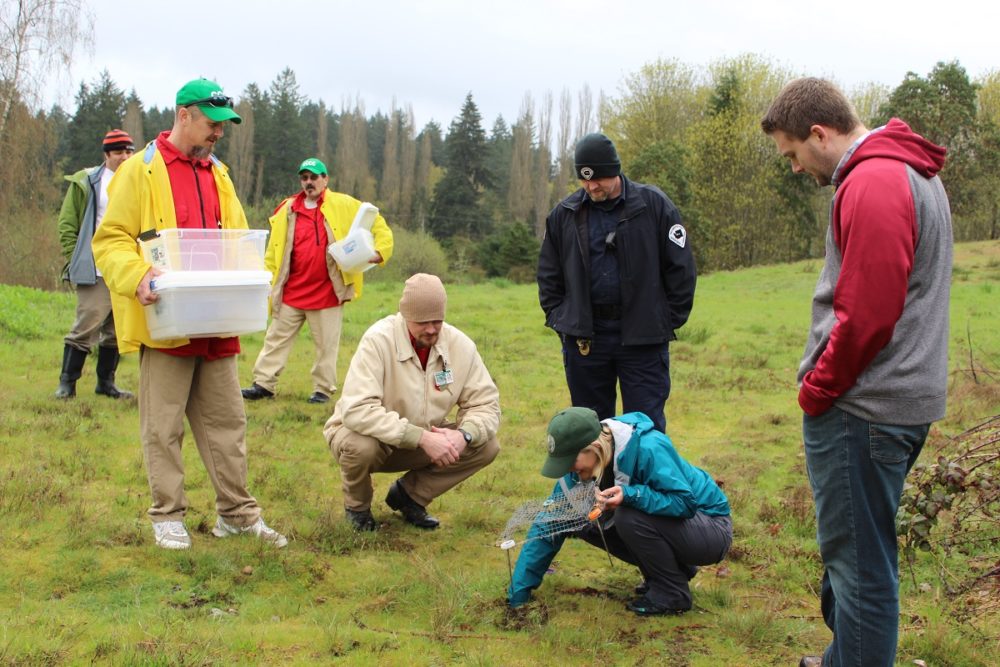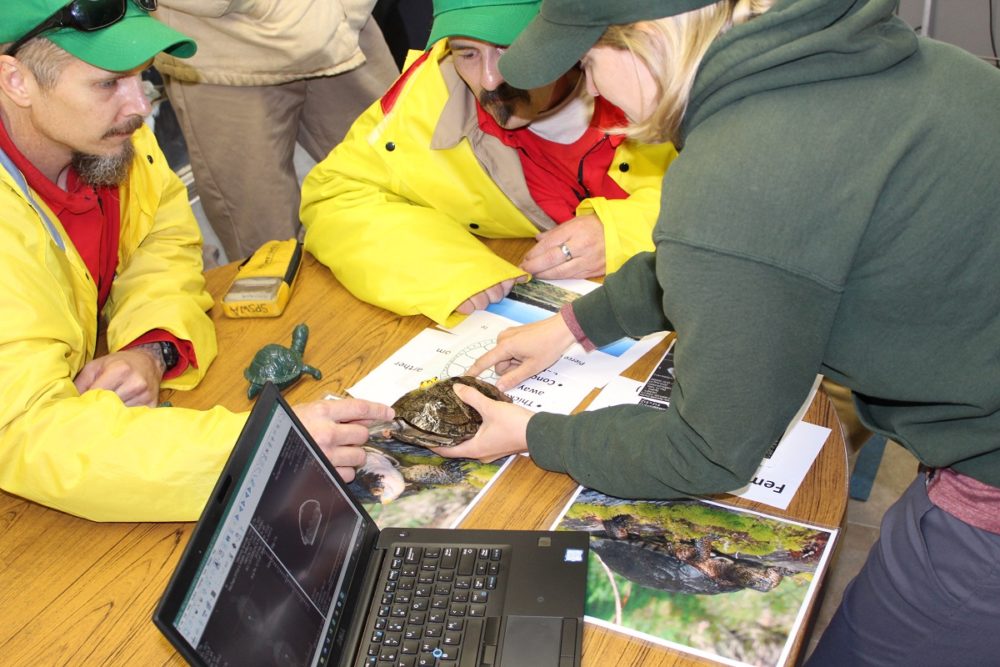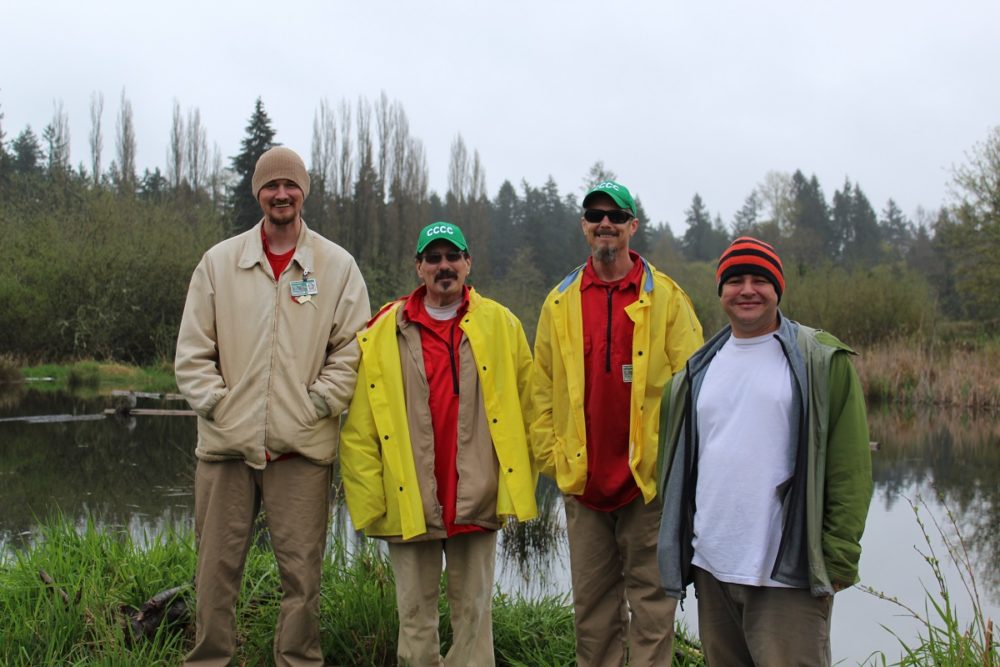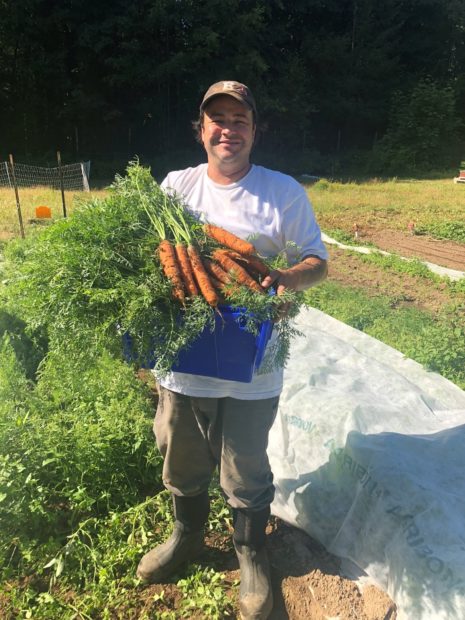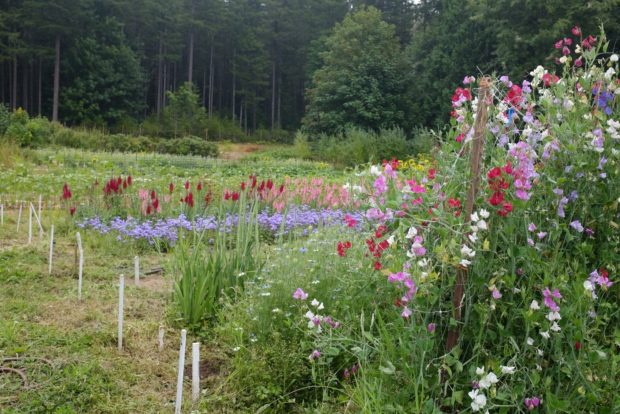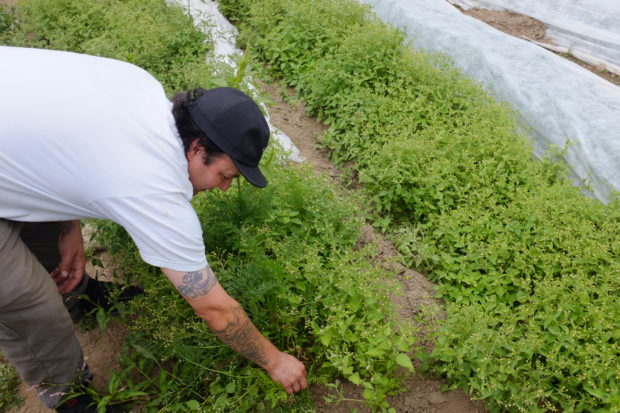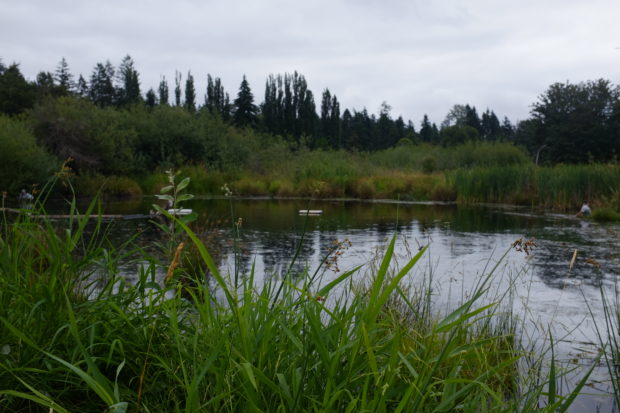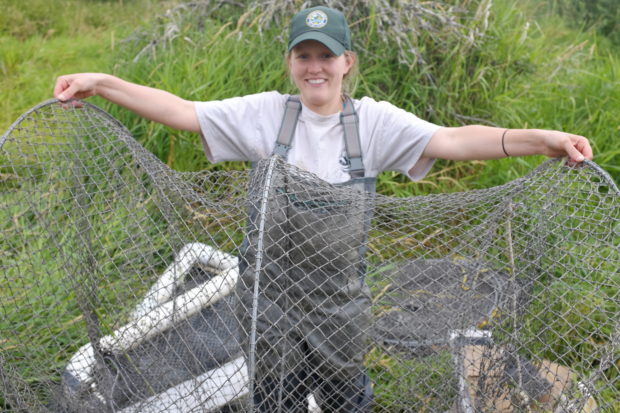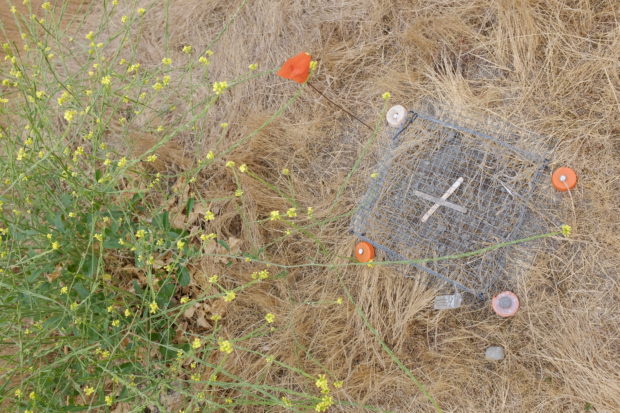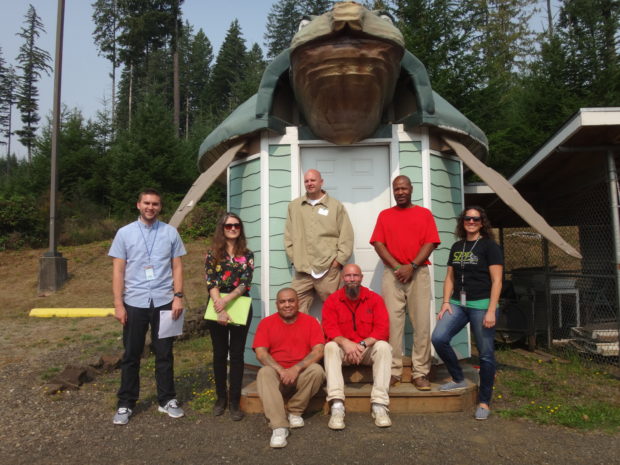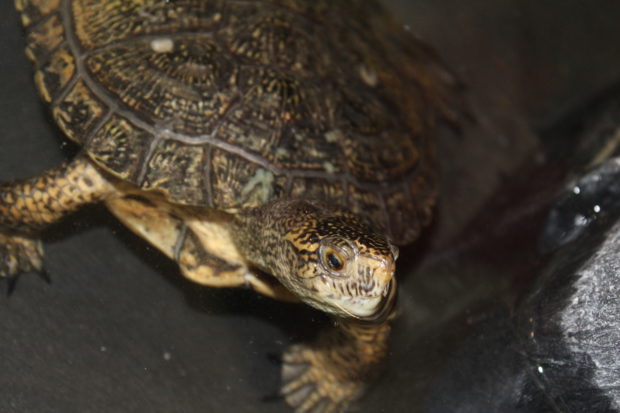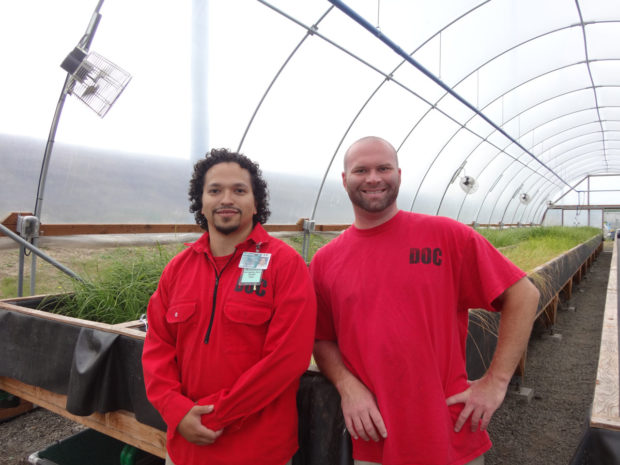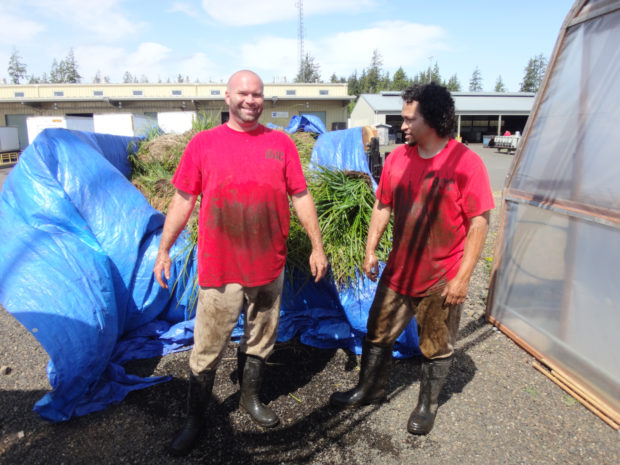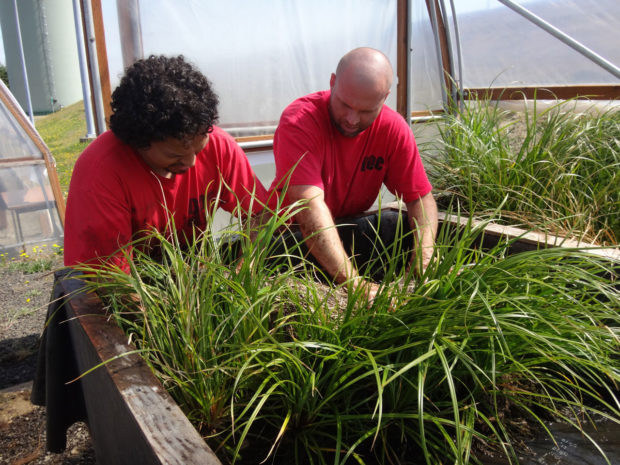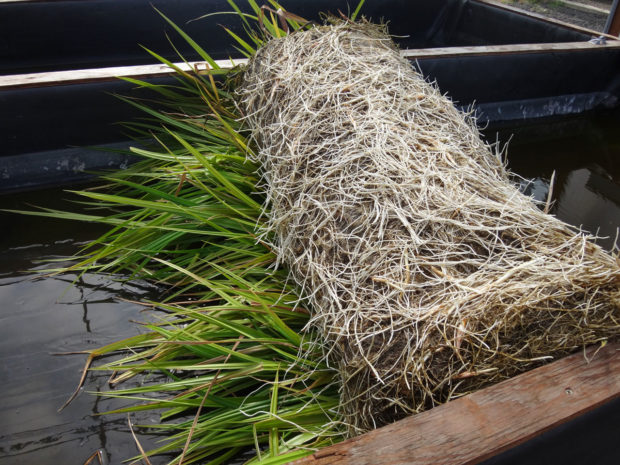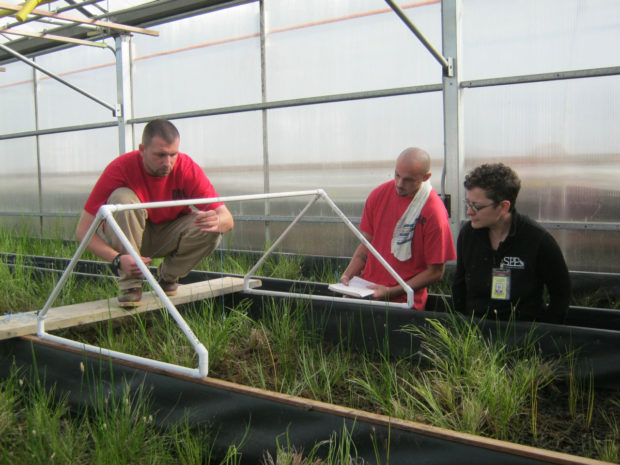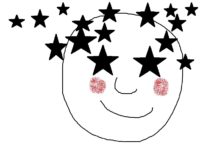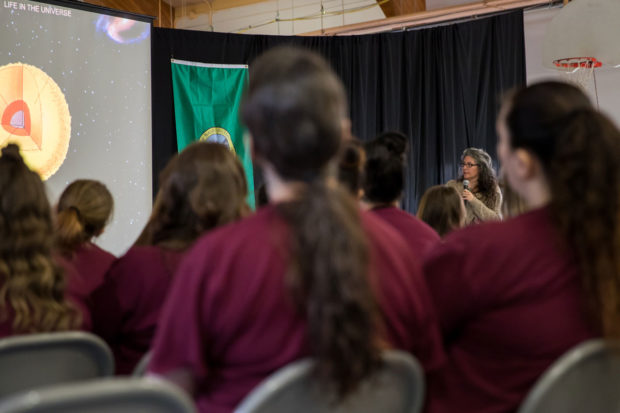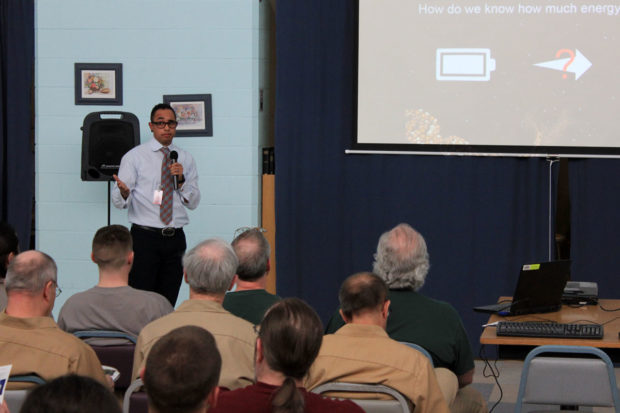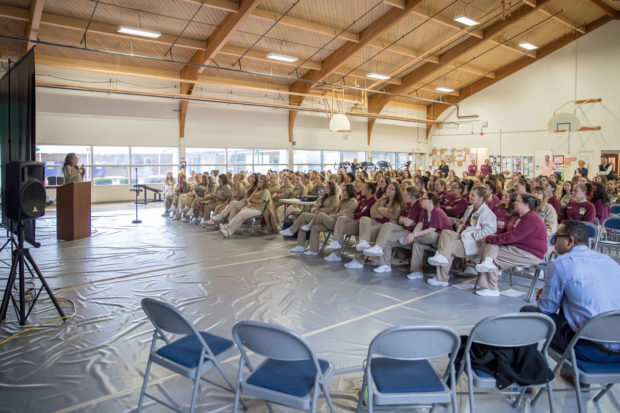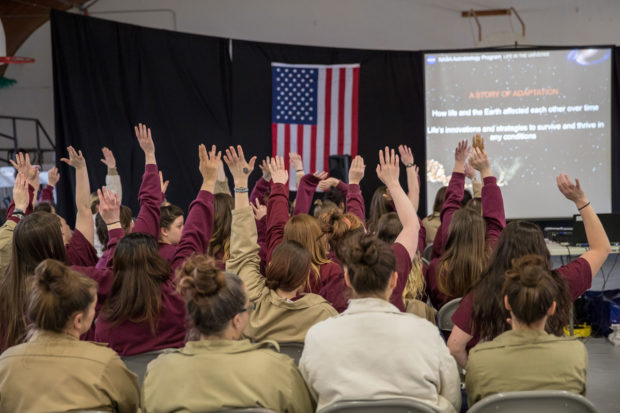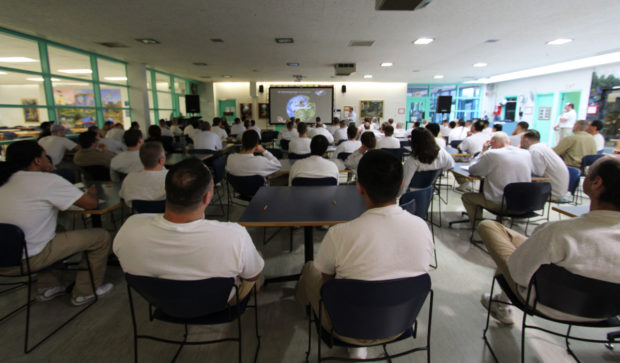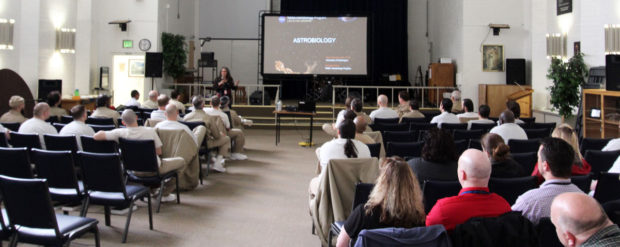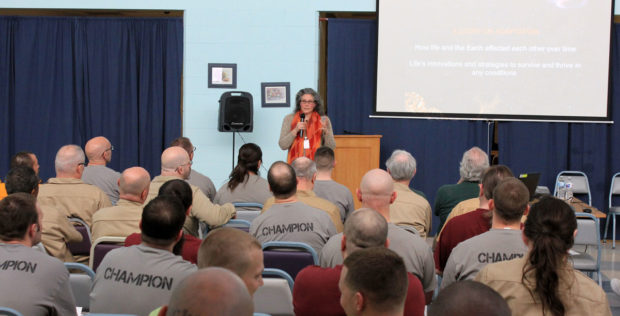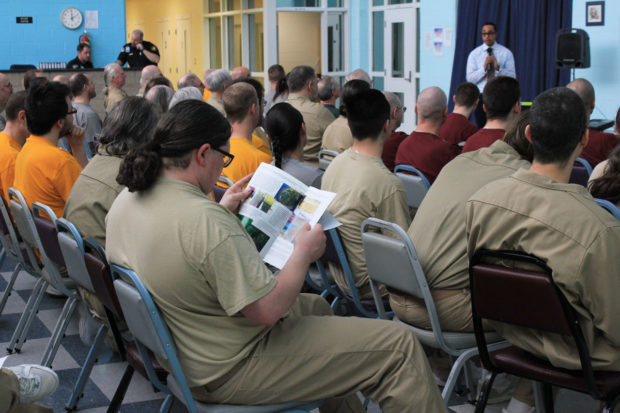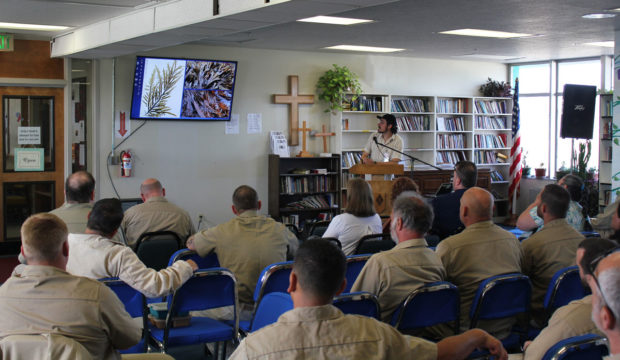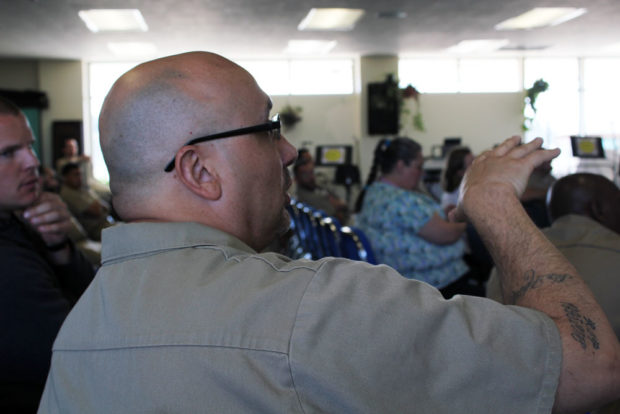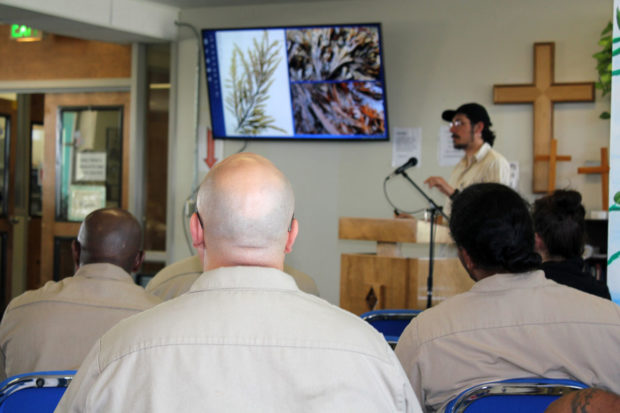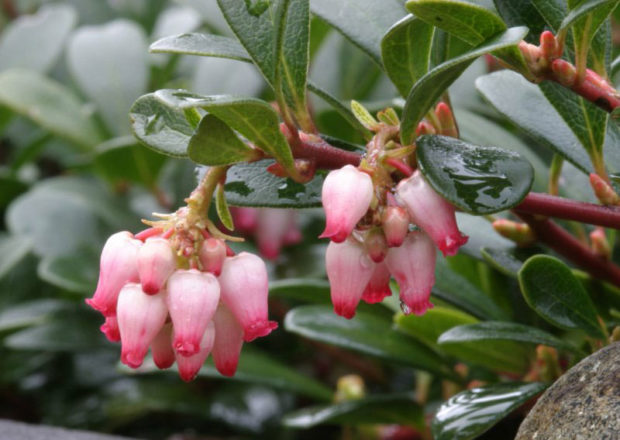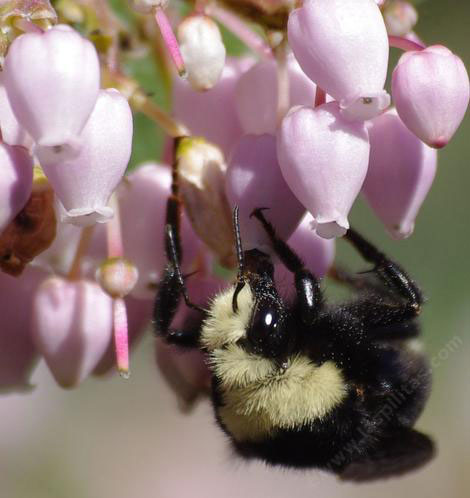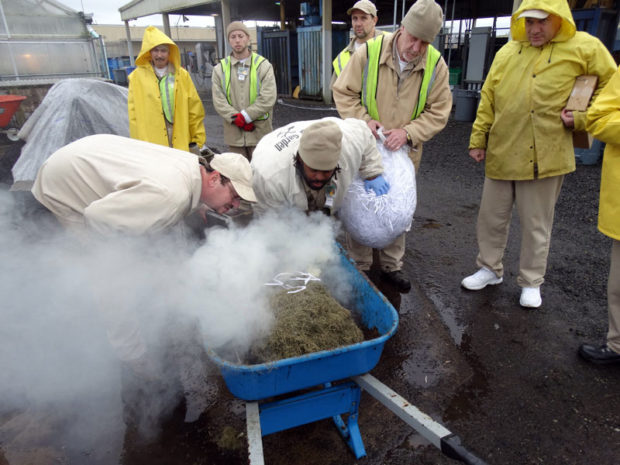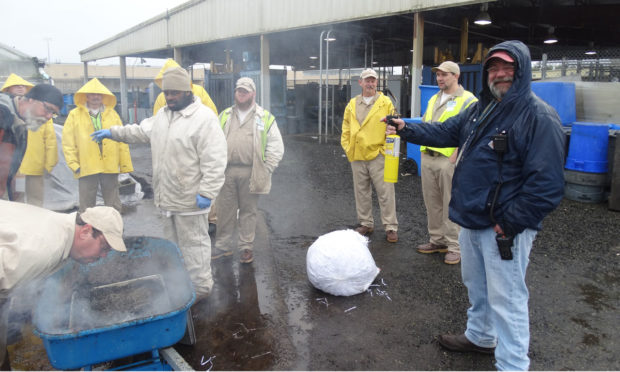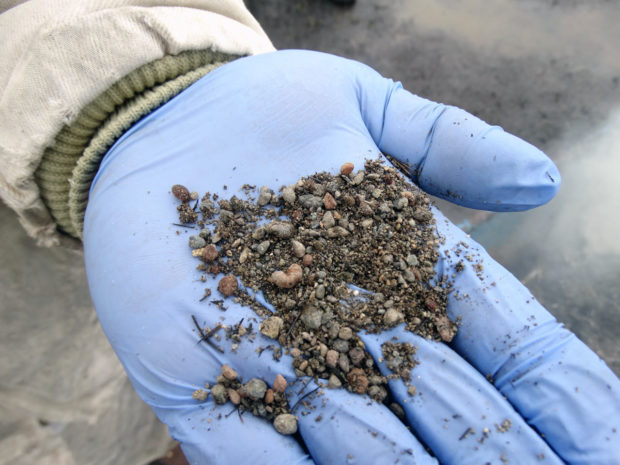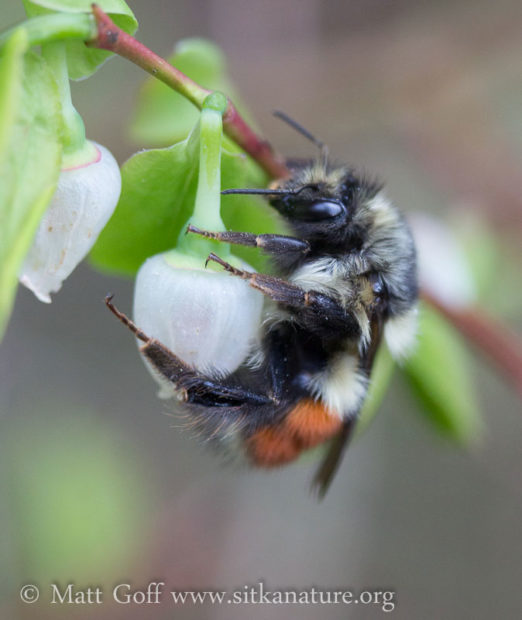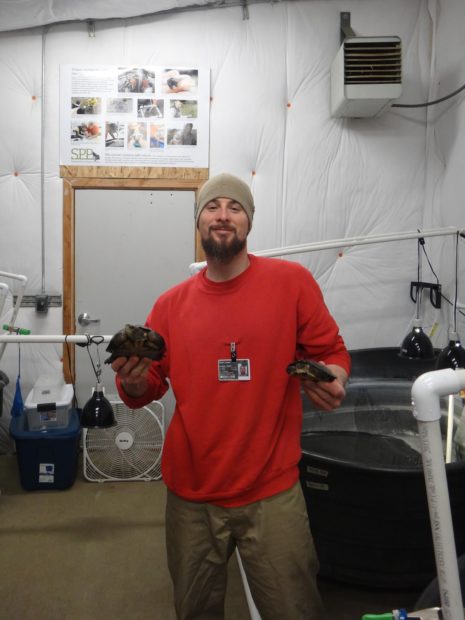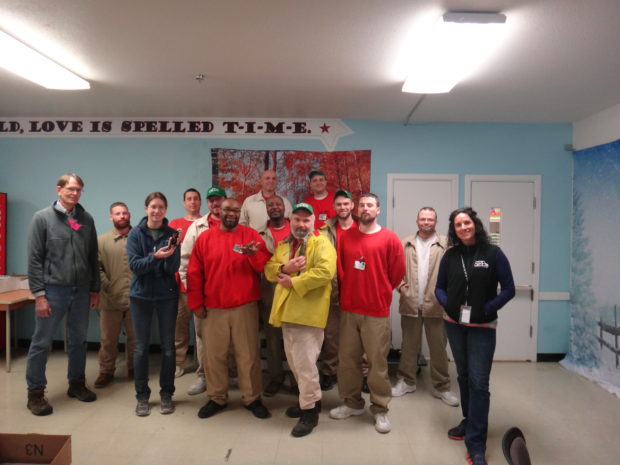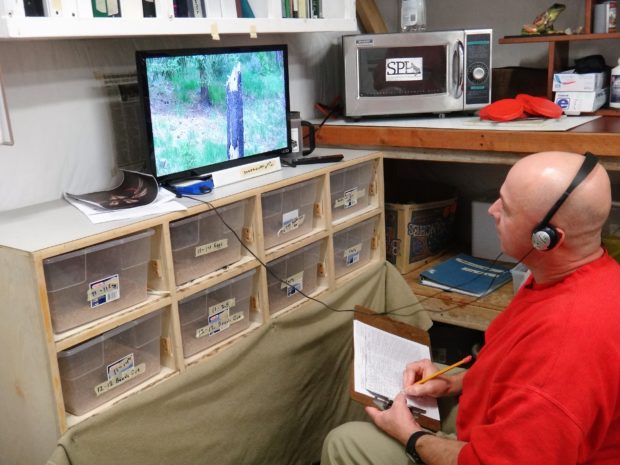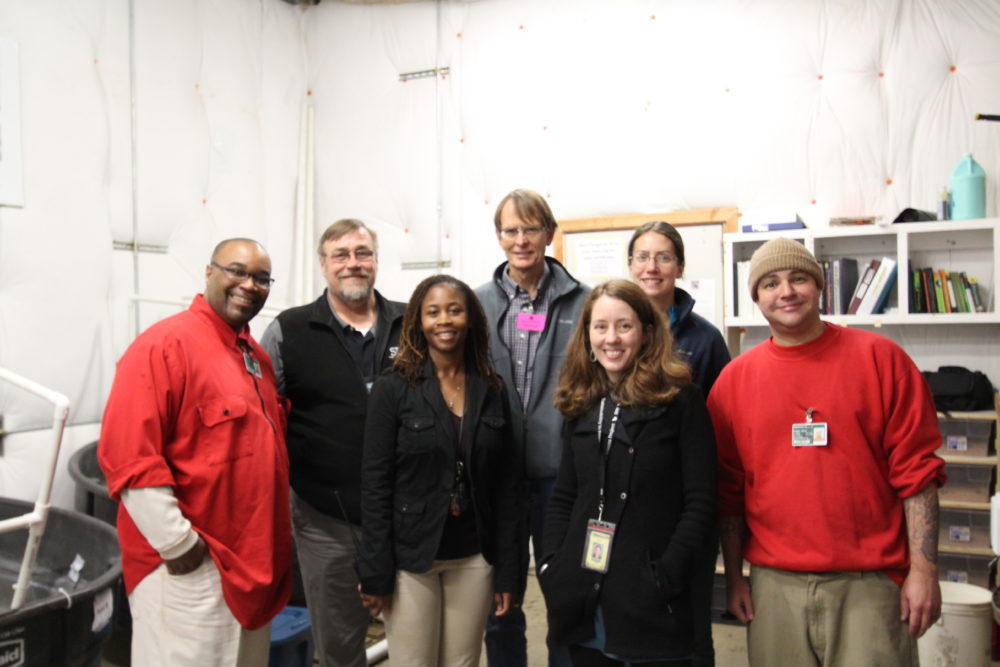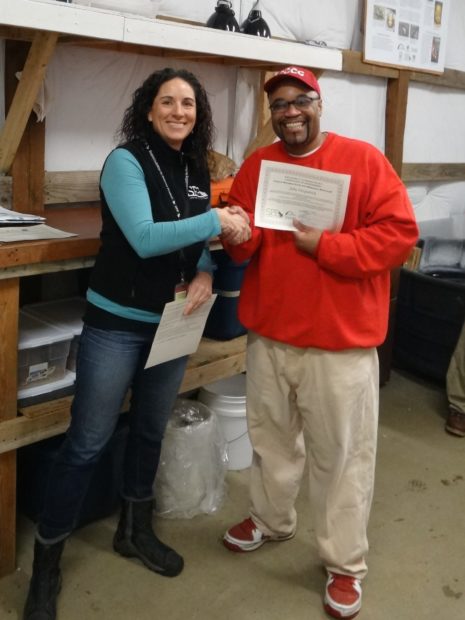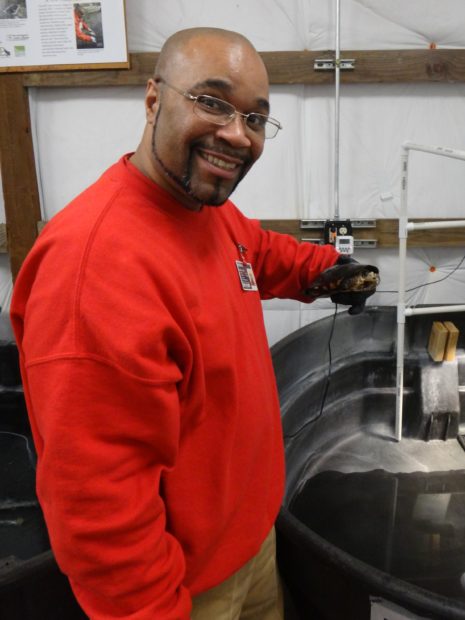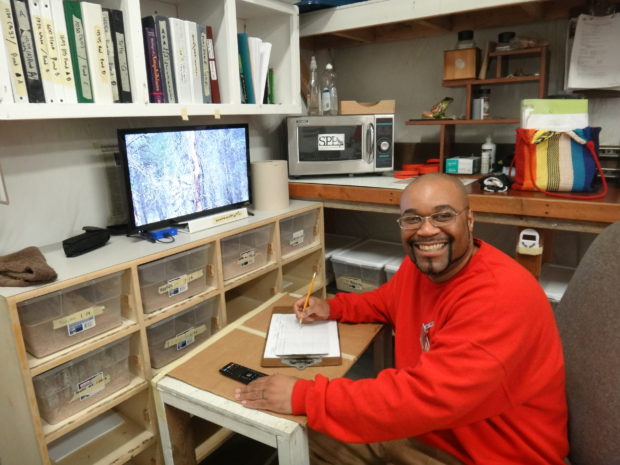We’re so excited to welcome Michael Zirpoli, SPP’s Ecological Conservation and Training Resource Manager, to the SPP team! We sat down to get to know a little bit more about him and find out what he’s been up to here at SPP.
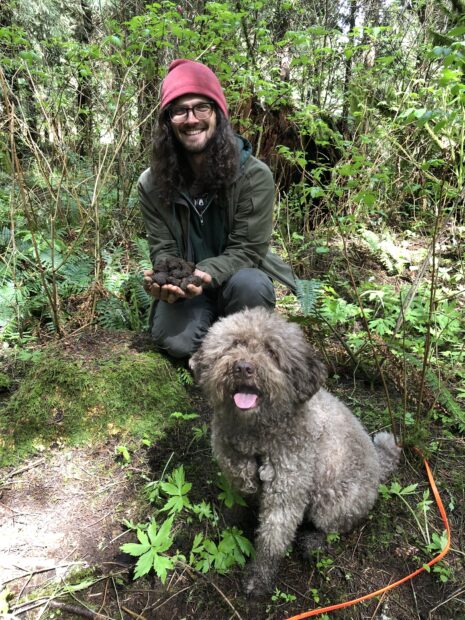
Michael Zirpoli, SPP’s new Ecological Conservation and Training Resource Manager, shows off truffle mushrooms foraged with the help of a truffle dog. Photo by Heather Stewart-Ahn
Could you tell us a little about your background and what brought you to SPP?
I moved to Washington state in 2011 to go to Evergreen State College. I was in an alternative education class at Penn State, and they talked about Evergreen’s model of education, and I got really interested. I went home that night and did some research, booked a ticket out here for the next week, and ended up moving my life across the country and never looking back. That was the start of my journey with Evergreen, fourteen years later there is nowhere on Earth I would rather be.
As a student, I took the Fungal Kingdom class with Paul Przybylowicz and Lalita Calabria. I ended up getting involved in a student originated independent research project with Lalita Calabria, investigating the effects of reindeer lichen aqueous extracts on Prairie plant germination and seedling growth. Part of that research involved connecting with Carl Elliott, the Conservation Nursery Manager for SPP.
That was the first time I had ever heard of SPP. I knew people who had been involved in Gateways for Incarcerated Youth, and I always thought it was really cool that Evergreen did these programs that involved working in prisons. When I learned about SPP, it always sat in the back of my head as something to keep an eye out for if a job ever opened. Then a job opened up six years later!
It’s kind of the perfect intersection of all of the work that I’ve done up to this point as well as a lot of personal stuff in my life. During a leave of absence with Evergreen, I had the opportunity, through an Americorps position, to work with the houseless population in the Olympia School District, which taught me a lot about working with marginalized communities in educational settings. I come from a family background of folks involved in law-enforcement and that side of the carceral system, I have also had family who have been incarcerated, so I’m familiar with the impacts the carceral system has on people‘s lives. SPP felt like an opportunity to take my interest in working in science and education aimed at underserved populations and do something incredibly positive and unique with it, all while still being involved in the Evergreen community.
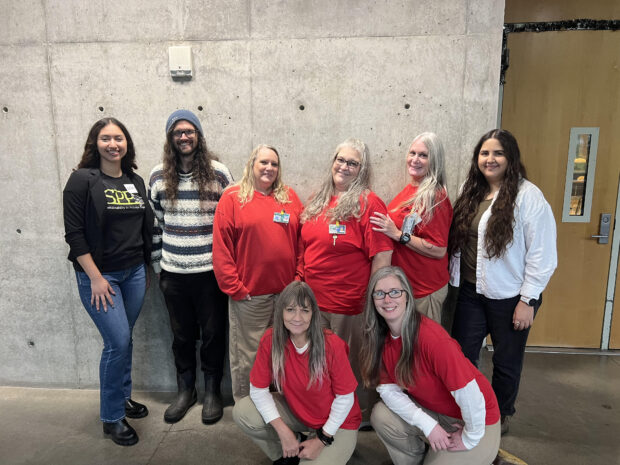
Michael with butterfly technicians and SPP Coordinators from Mission Creek Corrections Center for Women. (Top row from left to right: Xitlali Herrera, Michael Zirpoli, Shelly Lagroone, Jennifer Teitzel, Vickie Phillips, Mariana Cervantes. Bottom row: Kennie Calvert, Trista Egli)
What’s your role at SPP?
I’m the Ecological Conservation and Training Resource Manager for SPP, so my role is primarily focused on overseeing ongoing ecological conservation projects that SPP is involved in. That includes the Taylor’s Checkerspot butterfly program at Mission Creek and the Western Pond turtle program at Cedar Creek. I’m also involved in developing and disseminating SPP materials for the broader Evergreen community and broader community in general.
What initiatives are you most excited about working on?
I’m very excited to be involved in the Taylor’s Checkerspot Butterfly program. As I mentioned, some of my undergraduate research involved working on the prairies. The plants that we worked with in that study were all plants that are host or nectar sources for the Taylor’s Checkerspot Butterfly. It feels like an opportunity to get back into that world.
As I’ve learned more about the Western Pond turtle program and about the fungal pathogen that attacks their shells, I’ve gotten excited about that initiative. I’m particularly excited to be involved in the rehabilitation of the turtles, as well as the chance to use my background in mycology to do independent education and research about the fungus itself. I can’t wait to learn more information about the fungal pathogen and teach the technicians about it!
I also really love working with Evergreen students, they are some of the best students in the world. The fact that I get to work directly with our amazing graduate students is one of the best parts of the job for me. I also love that we get to work with state and federal agencies working on scientific conservation projects, not being expected to be the expert but more focused on disseminating that information to a broader audience.
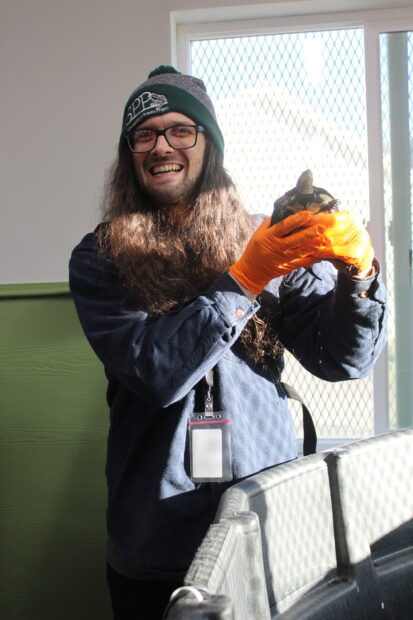
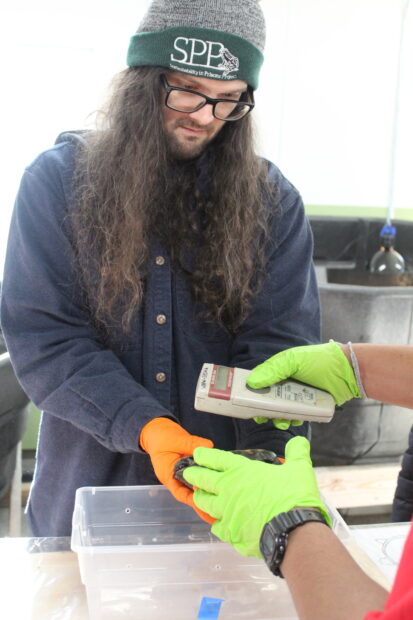
Michael at Cedar Creek Corrections Center on turtle intake day for the Western Pond Turtle program. Photos by Mikala Waldrup.
What’s your favorite mushroom and why?
Morels. I had the great fortune to catch morel fever from Mike Bueg, who’s faculty emeritus here at Evergreen. He was the first to teach mycology at Evergreen, and he was also Paul Przybylowicz’s mentor. I heard Mike talk about morels for the first time in fall 2016, and it started with being excited about picking morels for food. Morels are a great spring mushroom, one of the first things to get you out of the house after a long winter. There is a reason that there’s mushroom festivals across the world celebrating morels and the start of morel season! For me, morels are the harbinger of spring; it is life after the long winter.
I was really into finding them and picking them, and then that turned into a multi-year collection project. I learned that the taxonomy regarding morels is in flux right now, and there’s a lot of research and not a lot of documentation of species diversity here in the Pacific Northwest, more people eat morels then collect them for science, go figure. So, the past five or six years I’ve spent every spring collecting samples from around Washington and preserving them. I ended up doing a multi-year research project investigating morel taxonomy, their characteristics in isolated culture, and methods for indoor and outdoor cultivation.
One of the things I learned about morels is that people have been trying to cultivate them going back to the 1800s, but concerted efforts started in the 1970’s and 1980’s. There was one graduate student in San Francisco, Ronald Ower, who managed to cultivate them. He was the very first person ever to do it in the lab, but like in a broken-down freezer in the basement of his lab building with cultures he collected himself. I worked in the lab at Evergreen and thought, “I’ve got access to plenty of broken-down freezers, and a handful of morel isolations I’ve collected. I’m gonna try this.” I got close with my efforts, and then Covid happened. It slowed the process, but I’ve continued my work. I still have some bins in my backyard and I’m making plans to get back into the lab this summer to continue that cultivation research. I know this will be a project that follows me for the rest of my life.
We talk about morel fever in the spring. In February, I’m like “I need to go walk around even though I know the ground is still frozen and mushrooms are still weeks away.” But that’s led me to finding and photographing morels in the earliest stages of their development, sometimes no more than a millimeter in size! I can admit it’s become a bit of an obsession. My wife could tell you it’s about this time of year when I start talking about all the plans for hunts, burns to check, meals to cook, and experiments to try. This is not a self-proclaimed title, but I’ve been referred to by Paul Przybylowicz as the local expert on morels.
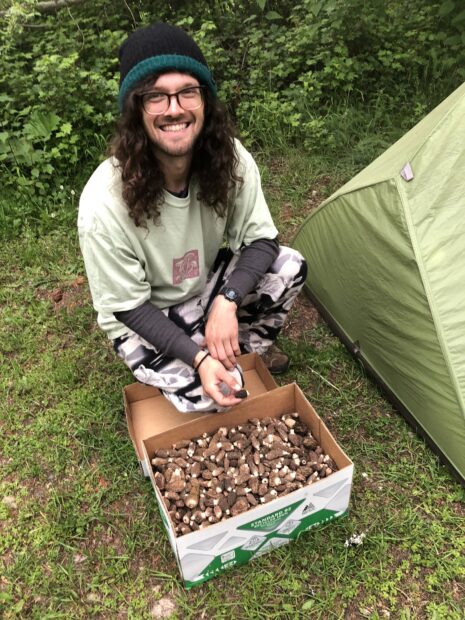
Michael with a box of morels foraged in Washington. Photo by Heidi Steinbach.
What kind of things do you like to do in your free time?
Aside from mushrooms? [laughs] Spending quality time with my best friend and wife, Heidi Steinbach, who also happens to be my former research partner. We have got two cats at home, so I spend a lot of time with them, I love a quiet day reading books on the couch with the cats. I love music, I like to play guitar, listen to records, and go to concerts. I enjoy being out on the water, especially whale watching and kayaking. I enjoy hiking and being out in the woods, camping, bird watching, foraging, and just general nature bathing.





